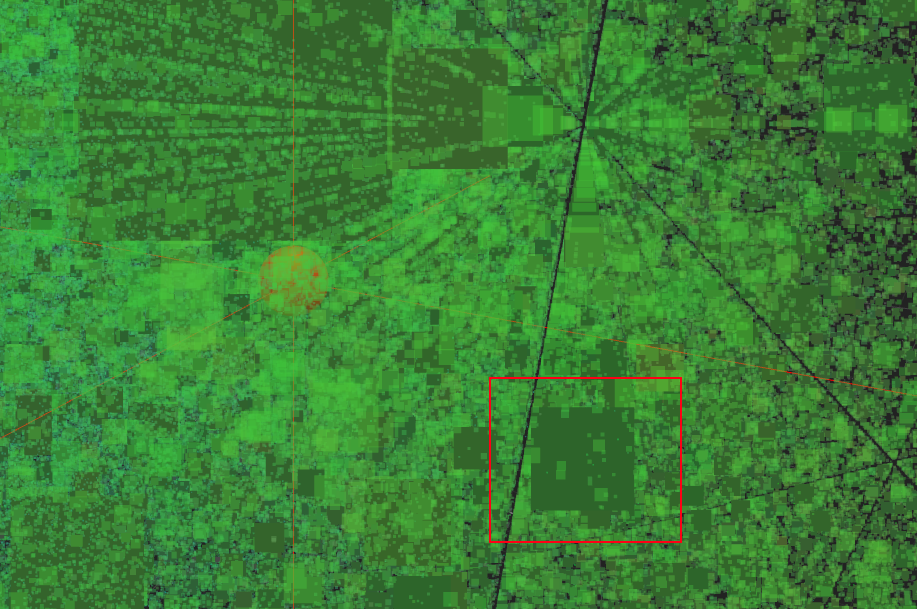The problem: I have a point cloud with quite a lot of data points (around one million). When I apply transparency to the rendered points, the transparency somehow does not show what is behind the rendered points
As you can see in the example of the marked point, it does not show what it should, it is as if there is a problem with the buffering.
I use three.js to create a point cloud using the following "setup":
The renderer:
this.renderer = new THREE.WebGLRenderer({
canvas: this.canvas,
antialias: true
});
The material:
this.pointMaterial = new THREE.ShaderMaterial( {
uniforms: {
time: { type: "f", value: 1.0 }
},
vertexShader: document.getElementById('vertexShader').textContent,
fragmentShader: document.getElementById('fragmentShader').textContent,
transparent: true
});
The vertex shader:
attribute float size;
attribute float opacity;
attribute vec3 color;
varying vec3 vColor;
varying float vOpacity;
void main() {
vColor = color;
vOpacity = opacity;
vec4 mvPosition = modelViewMatrix * vec4(position, 1.0);
gl_PointSize = size * (500.0 / length(mvPosition.xyz));
gl_Position = projectionMatrix * mvPosition;
}
The fragment shader:
uniform float time;
varying vec3 vColor;
varying float vOpacity;
void main() {
gl_FragColor = vec4(vColor, vOpacity);
}
The geometry (where I left out the part where I populate the arrays):
var bufferGeometry = new THREE.BufferGeometry();
var vertices = new Float32Array(vertexPositions.length * 3);
var colors = new Float32Array(vertexColors.length * 3);
var sizes = new Float32Array(vertexSizes.length);
var opacities = new Float32Array(vertexOpacities.length);
bufferGeometry.addAttribute('position', new THREE.BufferAttribute(vertices, 3));
bufferGeometry.addAttribute('color', new THREE.BufferAttribute(colors, 3));
bufferGeometry.addAttribute('size', new THREE.BufferAttribute(sizes, 1));
bufferGeometry.addAttribute('opacity', new THREE.BufferAttribute(opacities, 1));
this.points = new THREE.Points(bufferGeometry, this.pointMaterial);
this.scene.add(this.points);
I tried this with the built-in point material, where the same happens
this.pointMaterial = new THREE.PointsMaterial({
size: this.pointSize,
vertexColors: THREE.VertexColors,
transparent: true,
opacity: 0.25
});
Is this a but, expected behaviour or am I doing something wrong?


depthTest:falseandblending:THREE.AdditiveBlendingto the material ? – Ihram